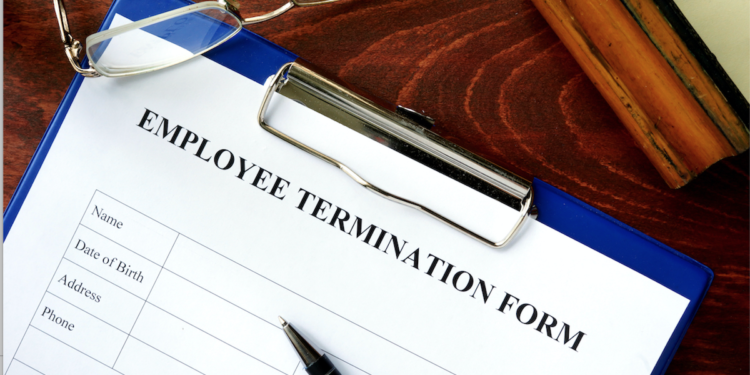When your employees leave your business, it is important to spend time offboarding them. It is much like onboarding, which is the process of integrating a new employee into your business. For offboarding, you are integrating an employee out of your business.
Offboarding is a consistent approach to managing the departure of an employee from the business. It is to reduce risk and financial loss to your company.
If you don’t have an offboarding process and checklist, your ex-employees could take home assets. These include cell phones, keys, passes, and other information. Once they leave, it is hard to retrieve these things later.
A good offboarding process notifies all relevant parties in a business. These include HR, IT, payroll, the manager, and co-workers.
In a survey from a security firm Cyber-Ark, they found 88 percent of information technology workers would take sensitive data with them or company passwords if they were fired. Another survey found that 50% of ex-employees can still access business apps after they leave.
When employees leave, what steps do you take to ensure ex-employees don’t have access to your business information?
Here are steps to include in your employee offboarding checklist and process.
Gather Information and Details about Their Last Day
You should note the date of their last day. If they are resigning, then you should receive a resignation letter from them. It is good to have this on hand if they try to file for unemployment.
It is important to document any final dialogues about their notice. They may tell you information about why they are leaving that is not noted in the letter. Write down any other comments they say so you will have a reference if you need it later.
On your offboarding checklist, you should include resignation date, termination date (final date) and the reason why leaving. If terminating, you should put termination date and reason.
Notify Other Departments and Employees
When an employee leaves, you will need to ensure you notify other departments such as IT and payroll. They may have their own offboarding checklists. Ensure you speak with those who need to know promptly.
It is very important to give information to others on a need-to-know basis. This ensures confidentiality. For example, your IT person does not need to know why someone was terminated in most cases. They do if it involves a security issue. This also shows your current employees that they can trust you with their personal information. Most states have laws which protect the privacy of the employee.
You may want to have standard letters or memos in place to notify employees when someone leaves your business. You should tell them that the person is no longer with the company if they were terminated and you wish the employee well in their future endeavors.
When sending out a letter to all team members, you may also want to announce any job openings within the company.
Need an Affordable Time Clock App for Your Employees? Try out ezClocker for FREE!
Recover Company Assets
Once the termination date has arrived, you should recover all company assets. This includes items such as the company phone, computer, keys, badges, uniforms, etc.
You should ensure you always have someone in charge of recovering business assets when someone leaves, like HR, IT, or security. Whoever is in charge of recovering the assets should have a list of each person in your business and what assets they were given when hired. Then they could refer to that list when recovering these items later.
Revoke System Access and Change Passwords
You should also ensure they are unable to get into your systems and apps. You may also want to ensure you change passwords if they had access to shared passwords.
Also, did they manage any of your social media pages? If they had access to anything business related, you should ensure they no longer have this access.
You may feel like you can trust your exiting employee especially when you have a small business. However, you don’t know what may happen when they leave. That is why it is very important to revoke system access and change passwords.
Notify Clients
If your employee deals with clients, ensure you develop a letter to notify the client of who they can contact after the termination date. This should be a formatted letter that is sent out to every client when an employee resigns.
Most clients understand that people leave a company so it should be easy to notify them. If your client has questions, you can answer them. You should, however, retain the confidentiality of the employee. You can keep it simple by stating the employee left to pursue other opportunities.
Conduct an Exit Interview
If your employee is resigning you should conduct an exit interview. These are conversations between you and your exiting employee to understand why they are leaving. Often you uncover something important when the employee leaves that you didn’t know. Most likely they will tell you of managerial issues, pay issues, or other things which you may want to correct.
It is easy to become defensive, so you probably don’t want the manager to conduct the interview. It should be someone like a seasoned HR person, or a third party who conducts the interview. Sometimes you uncover information such as a communication problem. It is important to ask questions that invoke a conversation. You don’t want just yes or no answers.
Ensure whoever conducts the interview is confidential as well. Sometimes you find out very personal things about an employee that should remain private.
Use the information from your exit interviews to develop plans and goals. This information can help to improve your business, your leadership, and your training plans.
Provide Exit Information to the Employee Leaving
You should also have a standard letter that you issue to an employee when they leave. They need to know when they will get their last paycheck and other information. They may also receive separation papers that are required by the state.
In the event of an employee’s death, ensure the designated family person has received any necessary information as well. For example, if you offer life insurance, a pension plan, or 401k to your employees, they will need that information and who to contact to start that process.
Final Thoughts on Offboarding
If the employee left on good terms, you may want them back as your business grows. If they left for a better position, you may have that position open later. Keep a list of potential rehires for the future.
Train your leaders to be professional in these situations. They shouldn’t be angry when an employee resigns. They should ensure the offboarding experience is positive. You may want the employee back at some point or they may refer others to your business. If they had a good experience, they can actually help your employee brand. If they had a bad experience, they will tell many, including online sites like Glassdoor.
Also, update your process and checklist as state and federal laws change. You should review it annually to ensure your process is up-to-date.
Finally, make sure your process is professional and consistent. You want the same process for every team member. Some situations of why they are leaving are different so ensure you have a process for those situations (e.g., resignation, termination, death, layoff). Once you have finalized your process and checklist, it should be easy to maintain.





1 comment